
31 December 2021
In the season of champagne here’s something to think about …
Champagne makes bubbles. Rain makes drops. The same “flaw” causes both to occur. Find out what they have in common in this December 2014 article.

31 December 2021
In the season of champagne here’s something to think about …
Champagne makes bubbles. Rain makes drops. The same “flaw” causes both to occur. Find out what they have in common in this December 2014 article.
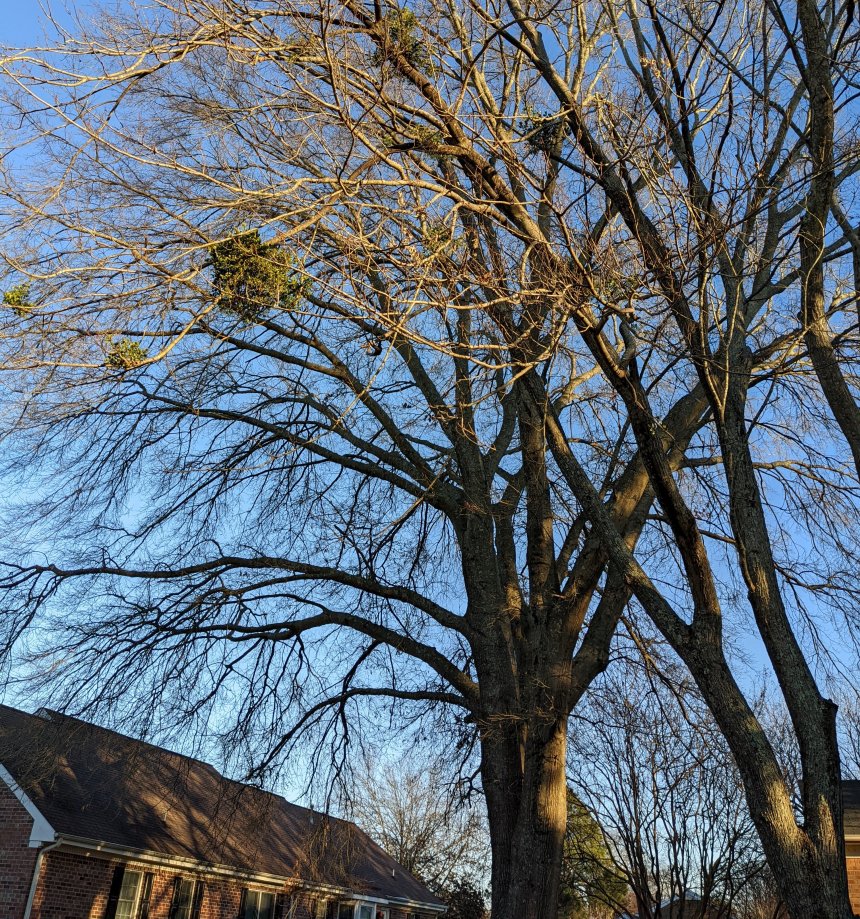
24 December 2021
This weekend we’re in Tidewater Virginia where the trees are bare but not empty. Many hold green balls of American mistletoe (Phoradendron leucarpum), a hemi-parasitic plant that extracts water and nutrients from tree branches while it also photosynthesizes.
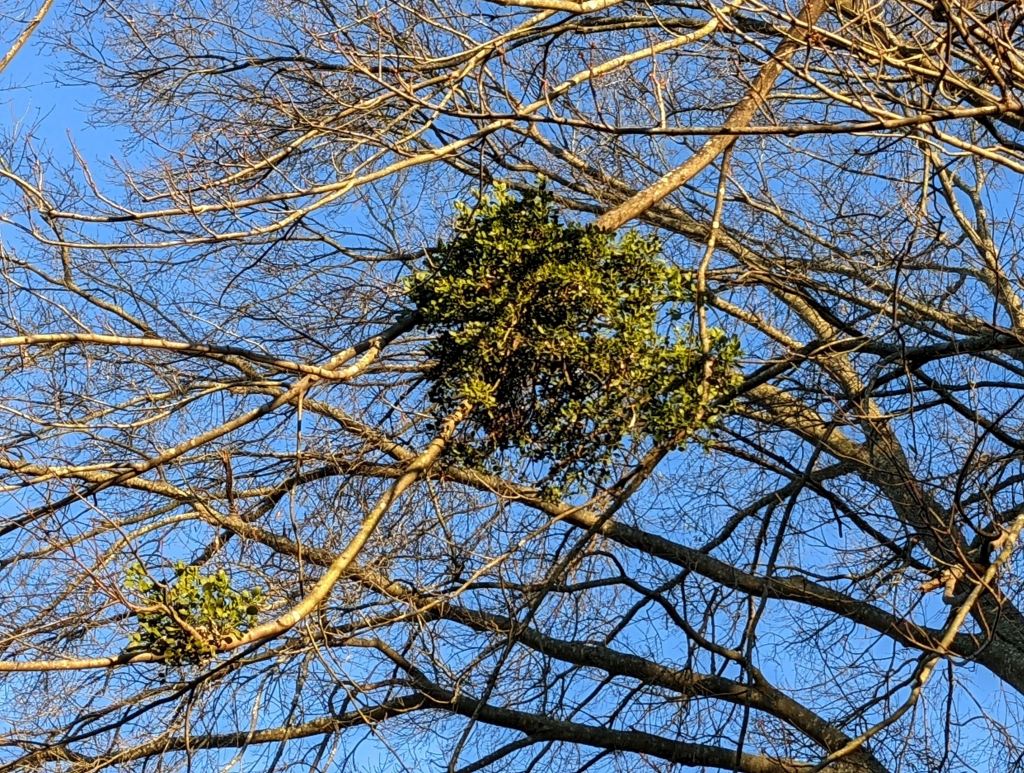
At this time of year it sports sprays of white berries that are toxic to humans but good for birds.
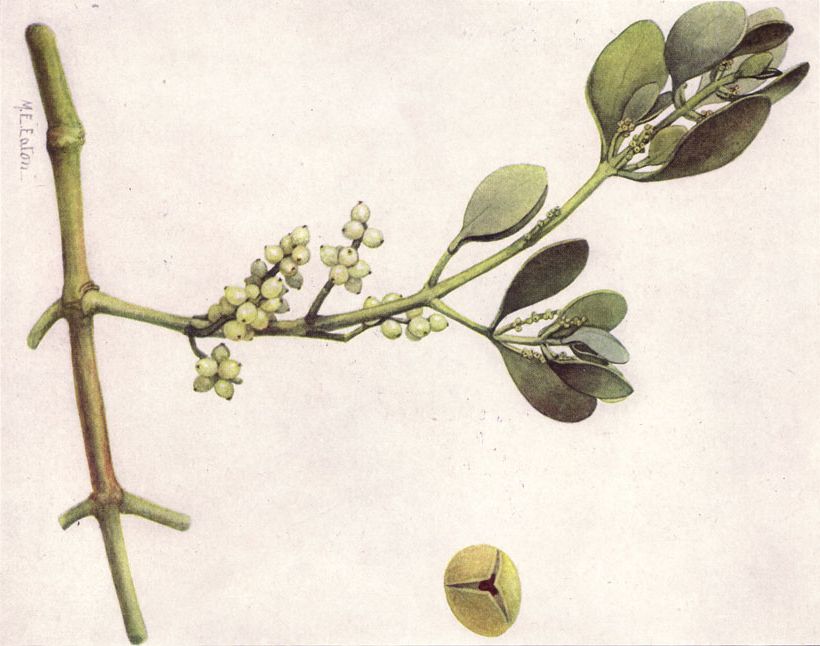
While the birds eat the berries I marvel that mistletoe is common here. We don’t have it in western Pennsylvania (‘x’ = Pittsburgh).

At home we buy mistletoe in a store to carry on this Christmas tradition.
It’s above us in the backyard in the land of mistletoe. Perhaps that’s why Virginia is For Lovers.
(photos by Kate St. John and from Wikimedia Commons; click on the captions to see the originals)

20 December 2021
Social animals like honey bees, parrots and humans are biologically driven to live in groups. Honey bees are so highly social that individuals cannot live outside the group. African grey parrots can live alone but age faster if they do. In humans the National Institute on Aging explains:
Research has linked social isolation and loneliness to higher risks for a variety of physical and mental conditions: high blood pressure, heart disease, obesity, a weakened immune system, anxiety, depression, cognitive decline, Alzheimer’s disease, and even death.
Yikes!
Since the COVID-19 pandemic began we humans have practiced social isolation on a large scale, especially during last year’s winter family holidays. For many it did not go well. Research published in February 2021 found that 40% of adults nationwide reported an increase in depression and anxiety, a four-fold increase compared to pre-pandemic levels.
Our isolation eased after vaccines made a dent in the pandemic in Spring 2021.
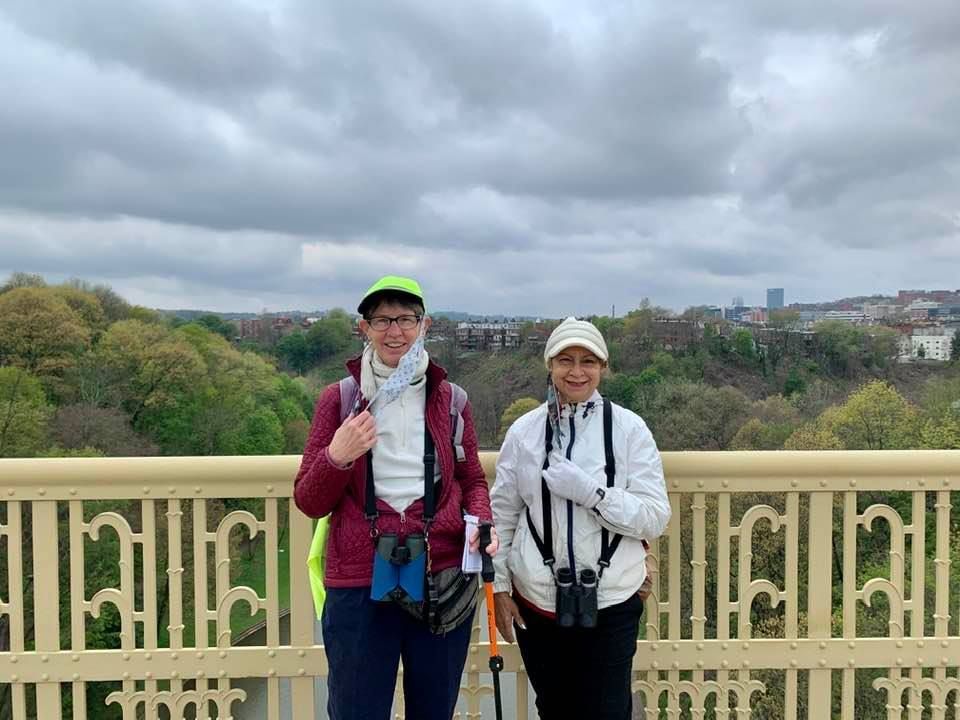
However the vaccines cannot completely protect us from COVID’s Delta and Omicron variants, though vaccines do prevent serious illness and death (whew!). Yesterday the New York Times reported:
All [Covid] vaccines still seem to provide a significant degree of protection against serious illness from Omicron, which is the most crucial goal. But only the Pfizer and Moderna shots, when reinforced by a booster, appear to have initial success at stopping infections, and these vaccines are unavailable in most of the world.
The other shots — including those from AstraZeneca, Johnson & Johnson and vaccines manufactured in China and Russia — do little to nothing to stop the spread of Omicron, early research shows. And because most countries have built their inoculation programs around these vaccines, the gap could have a profound impact on the course of the pandemic.
— New York Times, 19 Dec 2021: Most of the World’s Vaccines Likely Won’t Prevent Infection From Omicron
Because of Omicron some countries and some activities have shutdown again including all of the Netherlands, bars and restaurants in Britain, some U.S. colleges and Broadway shows.
At this point my husband and I are both wary and weary.
We are vaccinated and boosted with Moderna and are planning to visit relatives, all of whom are vaccinated, so we won’t be socially isolated this Christmas but we are wary that they or we might catch COVID anyway.
And we are weary of the isolation and the stress of the pandemic.
I don’t know about you but I certainly feel that I’ve aged since the carefree days of 2019.
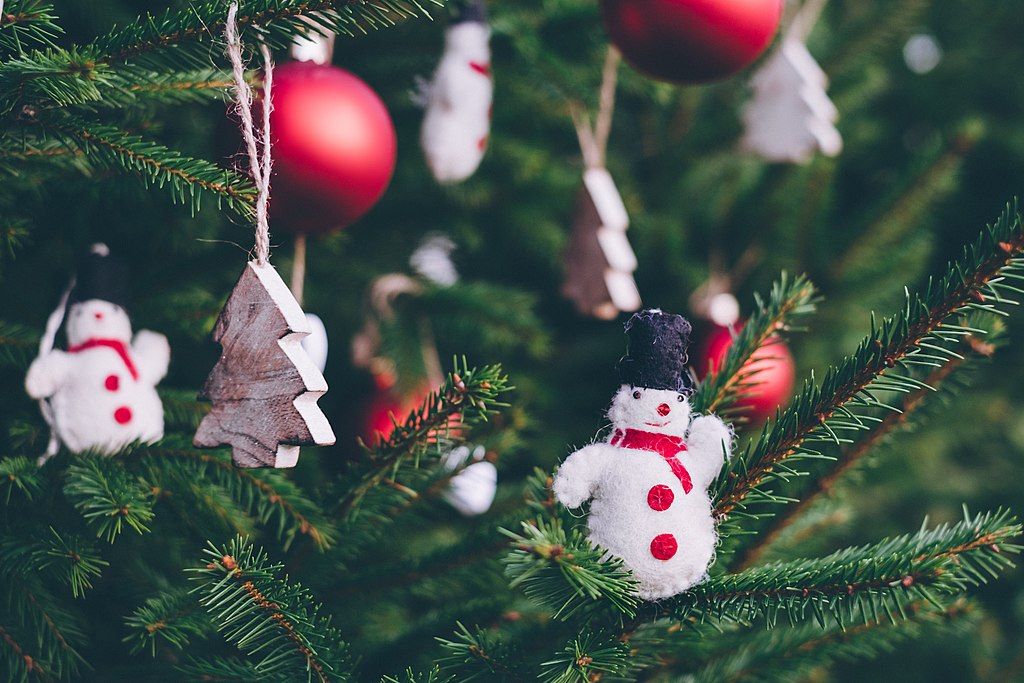
(photos from Flickr, Ramona Sahni and Wikimedia Commons; click on the captions to see the original)

16 December 2021
Stress makes humans age faster so it’s no wonder that pandemic stress has made many of us feel and even look older.
Unlike us, however, lobsters are biologically immortal. They don’t slow down, they don’t get frail, they don’t die of old age. Lobsters never get old.
Their lack of aging is described in this vintage article from 2014, written at a time that was stressful for my family but turned out happy in the end.
(photo from Wikimedia Commons of a juvenile European lobster, closely related to the American lobster)

15 December 2021
After four months on the loose the wild zebras of Maryland are back on the farm from which they escaped in August. News of their return was announced on Tuesday 14 December 2021.
Spokesmen for the U.S. Department of Agriculture’s Animal and Plant Health Inspection Service and the Prince George’s County Department of the Environment confirmed that the zebras have been captured, but they could not provide details on when the recovery took place.
Neither the USDA nor Prince George’s County Animal Services were involved in the capture. They said they were notified Monday that the zebras had been recovered and returned to their herd last week.
— Washington Post: Zebras in Maryland caught after months on the run, officials say
WUSA9 tells the story in this 14 December YouTube video.

Read more at WUSA9 or the Washington Post.
p.s. On a happier note click here for a video about three well cared for zebras in Cecil County, Maryland including advice from their owner. (The Cecil County zebras live on the other side of Chesapeake Bay from the “wild zebras of Maryland.”)
(zebra photo from Wikimedia Commons, WUSA9 screenshot from YouTube video; click on the captions to see the originals)

10 December 2021
News this month is that robotics experts have created a drone with legs that can land and grasp like a bird … inspired by peregrines!
video embedded from Science Magazine on YouTube
Does this bird-like drone indicate that “Birds Aren’t Real” is true? After all, “Birds Aren’t Real” is a …
Gen Z-fueled conspiracy theory which posits that birds don’t exist and are really drone replicas installed by the U.S. government to spy on Americans.
— New York Times: Birds Aren’t Real, or Are They: Inside a Gen Z Conspiracy Theory
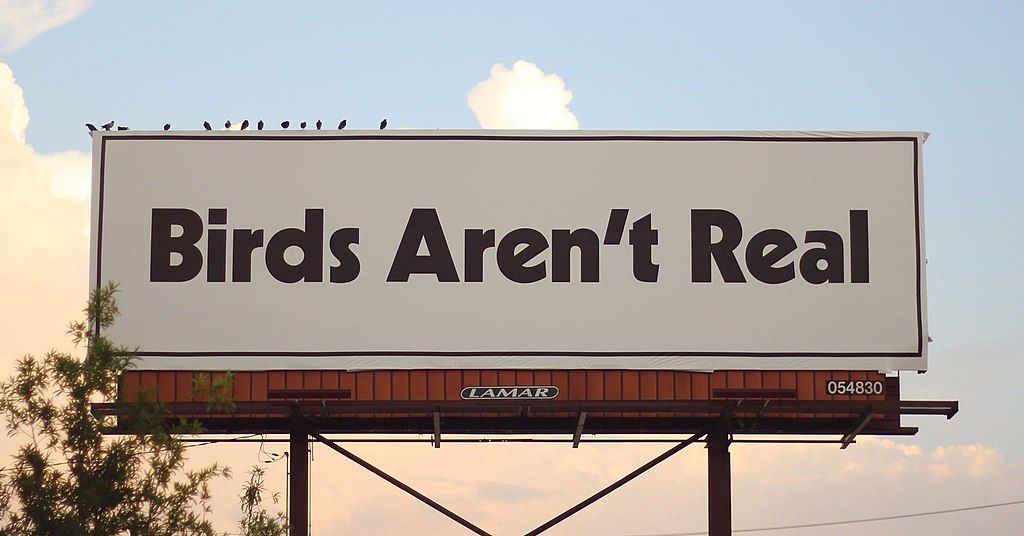
Perhaps the leggy drone is the missing evolutionary link between drones and all the “birds.”
Nope. “Birds Aren’t Real is a parody social movement with a purpose” and Pittsburgh is one of its hotspots. Please do read this New York Times article so you can understand those billboards!
Curious about the drone? Read more here: This drone has legs: Watch a flying robot perch on branches, catch a tennis ball in midair.
(screenshot & video of drone from Science Magazine video, photo of billboard from Wikimedia Commons; click on the captions to see the originals)

7 December 2021
In Case You Missed It.
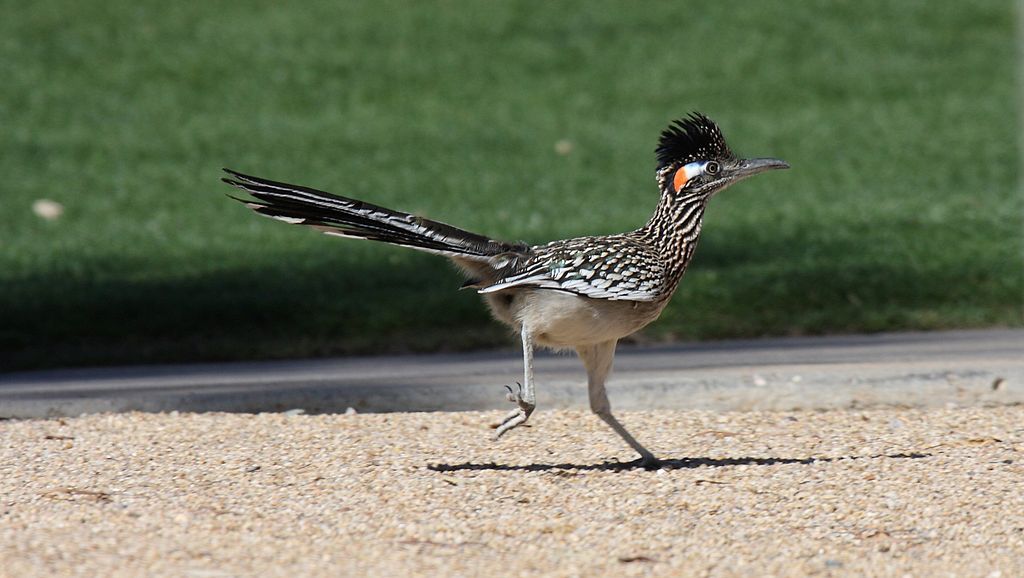
The greater roadrunner (Geococcyx californianus) normally runs 15 mph to capture prey or faster in short spurts. He can’t fly well, just extended-wing glides, so walking takes him everywhere he wants to go. Around humans he can be so curious that he gets into trouble.
Last month while a family was packing a moving van in Las Vegas, a curious roadrunner walked into the van when they weren’t watching. The doors closed, the trip began, and the roadrunner was trapped inside for four days. He was discovered when they unpacked the van in Westbrook, a suburb of Portland, Maine.

Volunteers transported the roadrunner to Avian Haven in Freedom, Maine (another hour and a half drive) where he got expert care. Avian Haven tells his story here:
The roadrunner recovered so well that nine days later he boarded a direct flight from Boston to Las Vegas and was released in his old neighborhood by Nevada Department of Wildlife. The video shows his release in real time, then repeats in slow motion. I think he ran out of the carrier faster than 15 mph.
Though roadrunners prefer to travel on the ground, 6.5 hours in an airplane sure beats four days in a moving van. As the Audubon Guide to North American Birds explains:
The roadrunner walks and runs on the ground, flying only when necessary.
p.s. See news about the roadrunner at News3LV: His discovery in Maine: Roadrunner, going-faster, ends up in Maine after hitchhike, His Nevada neighborhood: Roadrunner Road Trip takes accidental cross country trip to Maine , His return: Roadrunner arrives home in Las Vegas after stowaway trip to Maine.
(Roadrunner news embedded from Facebook, map and photos from Wikimedia Commons. The first three photos are NOT from the actual event.)

6 December 2021
We usually think of plastic in the water as the bags, bottles and other items that arrive in flood debris.
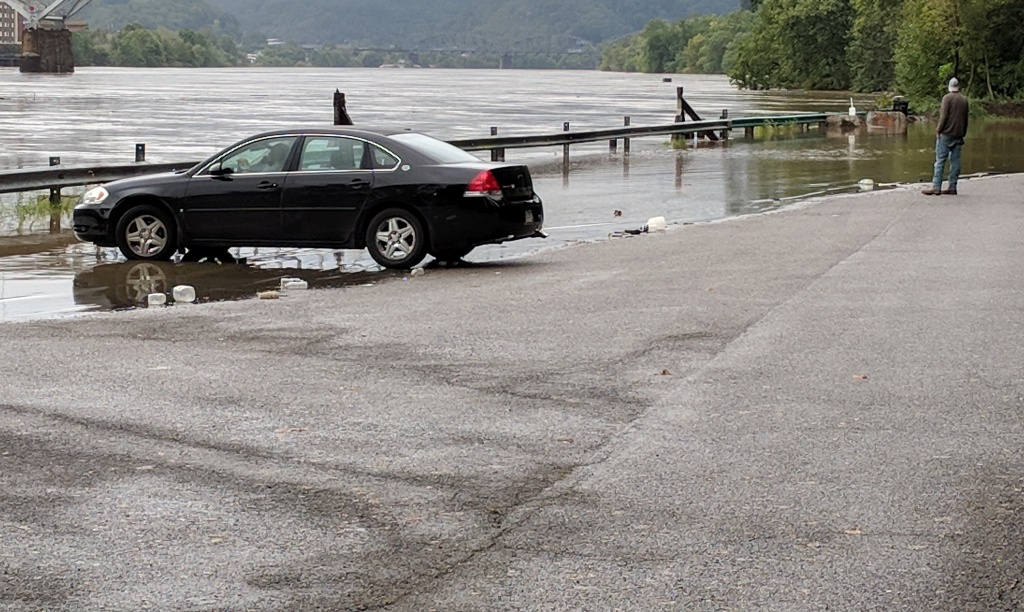
But if you take a microscopic look at our waterways, as PennEnvironment did last year, you’ll find a host of microplastics less than 5mm across (see 1 cm = 10 mm in photo below). These include:
Nurdles (white pellets at top) the tiny pre-production plastic pellets that are the first output of plastic making. They are transported in bulk to factories where they are melted down to become plastic products.
Microbeads, 1 mm or less, banned in rinse-off products, a loophole still allows them in make-up, cleaning and personal care products.
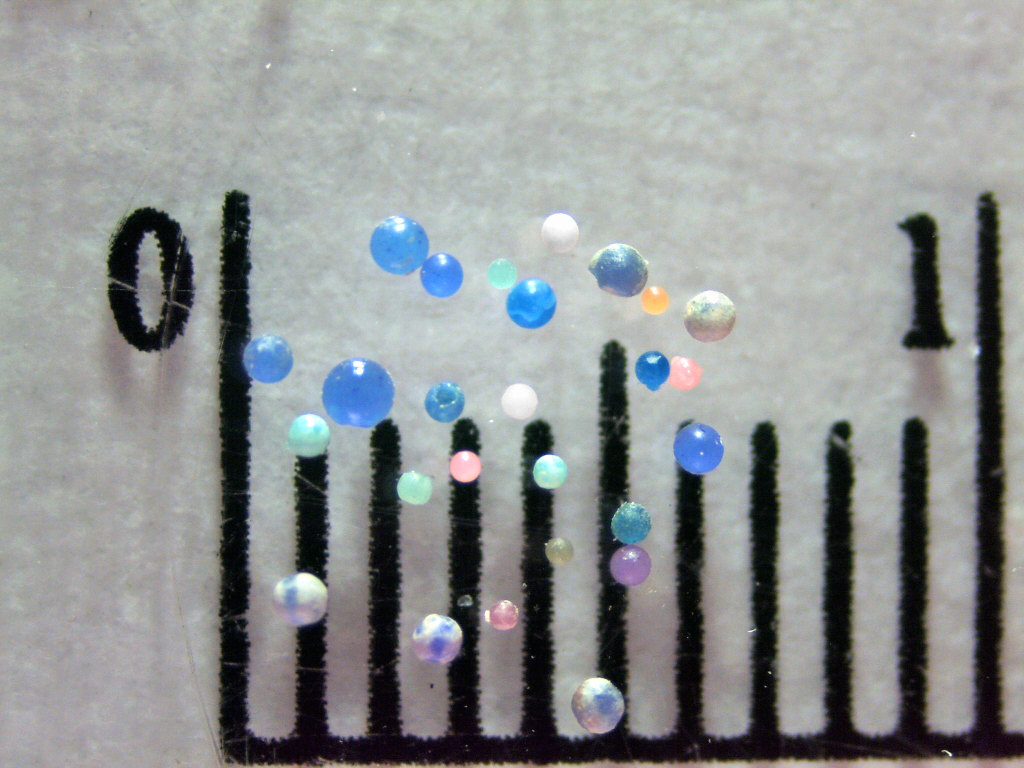
Fragments and films and …
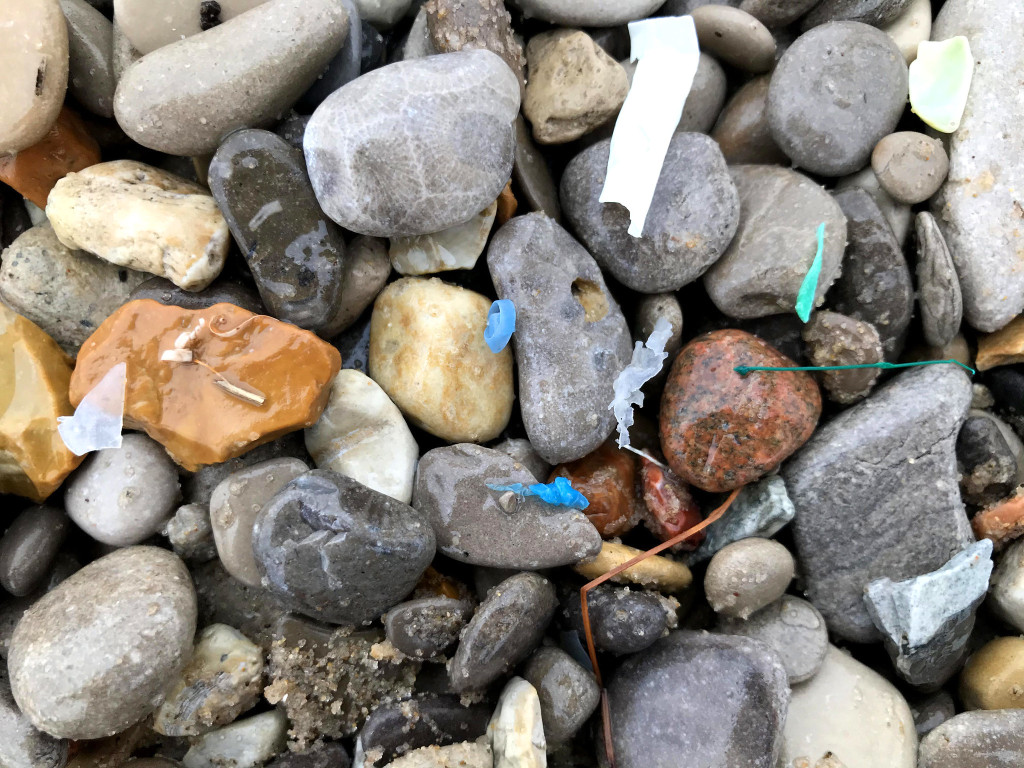
Fibers, usually from clothing. 60% of our clothing is made of plastic such as polyester, nylon, acrylic. Every time we wash our clothes they shed microfibers into the water and air (dryer exhaust). I can’t help but add to the problem as polar fleece is my favorite winter clothing. Aaarrg!
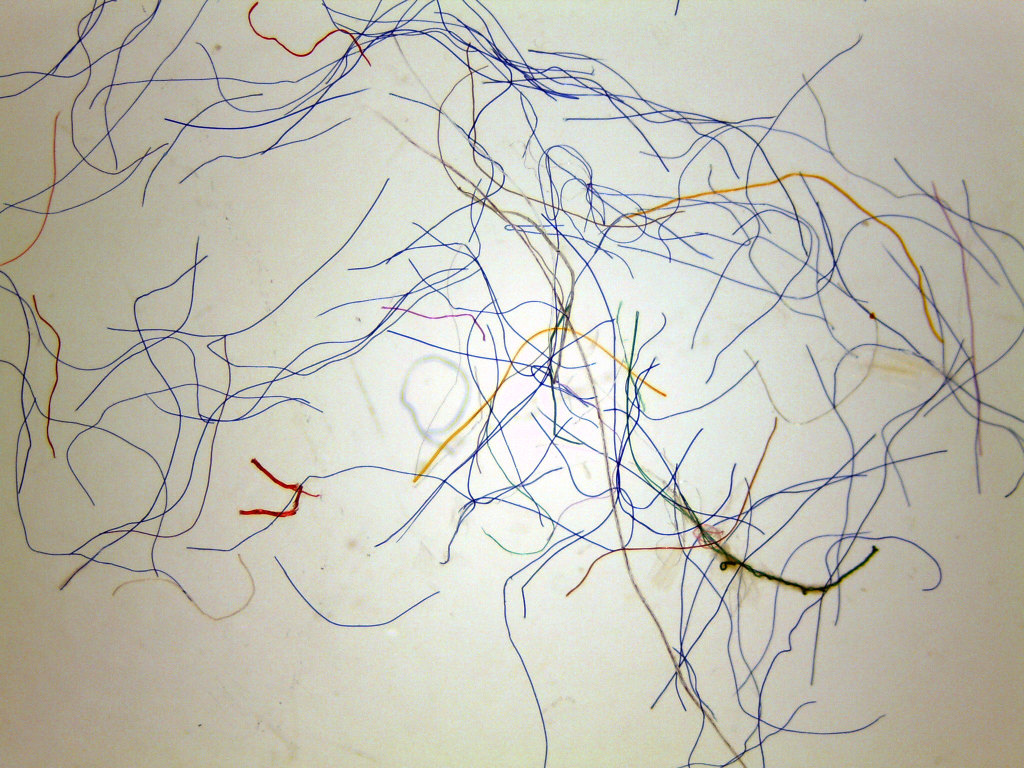
Microplastics are omnipresent in Pennsylvania’s waterways and we are unwittingly ingesting them. After a study released by PennEnvironment last March found microplastics in all 300 water samples taken from 53 PA waterways including seven in Allegheny County Michael Machosky wrote in NextPittsburgh “How bad is the plastics problem in PA? It’s like eating a credit card every week.”
Sadly Pittsburgh is about to add to the plastics problem in a major way. Soon the new Shell Cracker plant in Beaver County will produce more than a million tons of nurdles each year.
Those nurdles can quickly become an environmental disaster as seen on the shore of Sri Lanka after the X-Press Pearl container ship burned and sank in May 2021 and dumped up to 70-75 tons of nurdles into the Indian Ocean. Nurdles are still washing ashore six months later.
Plastic in the water is much smaller than you think.
(flood photo by Kate St. John, all others from MichiganSeaGrant on Flickr with credit noted in the captions; click on the captions to see the originals. Michigan Sea Grant monitors the health of the Great Lakes including microplastics in their waters. )
P.S. Source article for how we accidentally eat plastic: Revealed: plastic ingestion by people could be equating to a credit card a week.
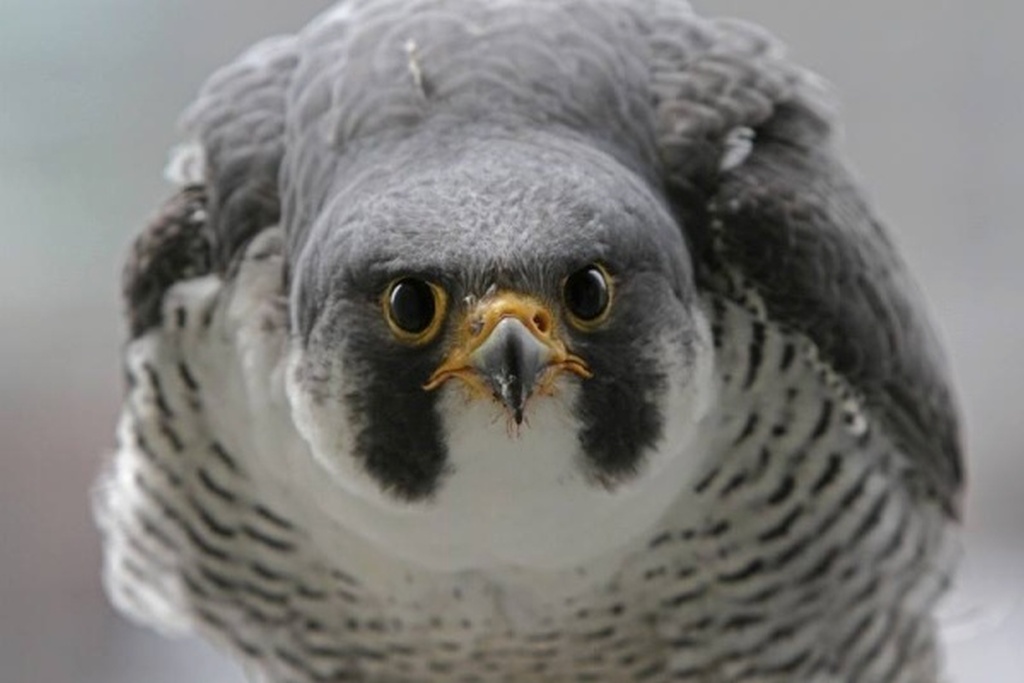
30 November 2021
We humans assume that what we see is what everyone else sees, including other species. But this isn’t so.
Peregrines see much finer details at a greater distance that we do. The details don’t blur for them in a 200 mph dive. (Click the link to learn more.)
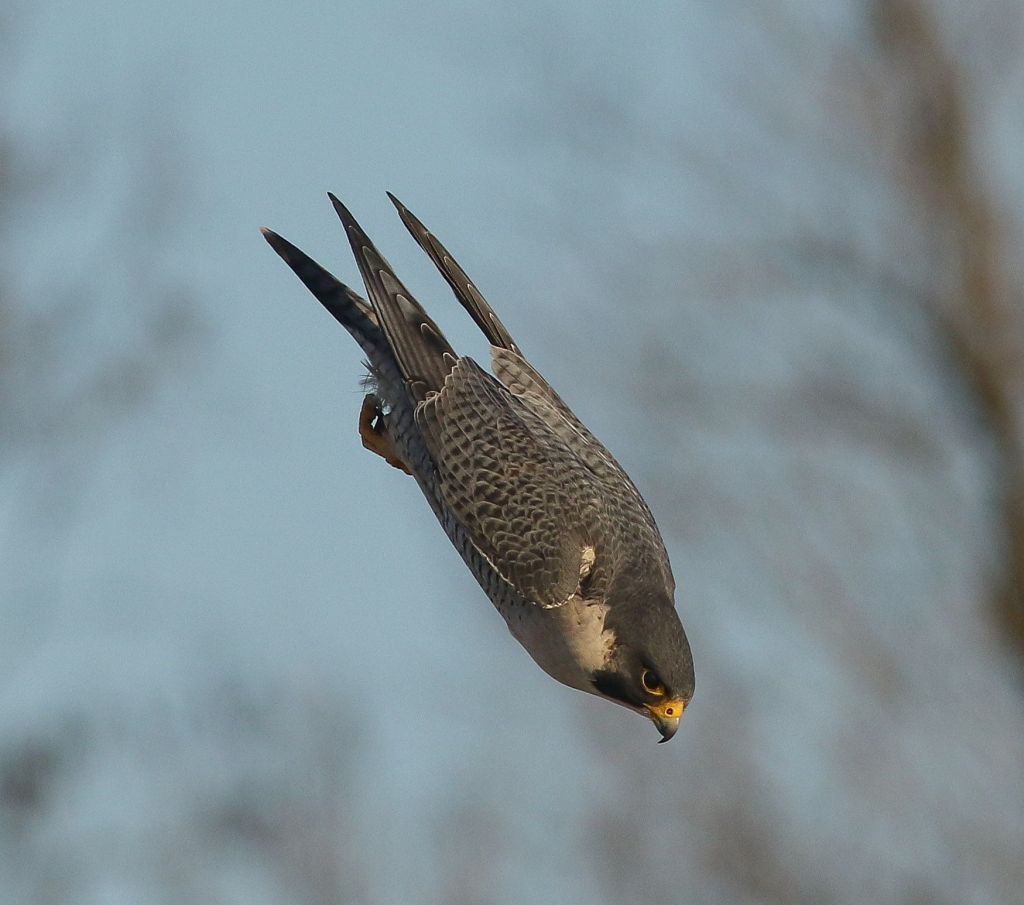
Cats cannot see red-green nor distant details, but they see much better in the dark. Who needs distance vision while looking for a nearby mouse at night? Click here to see photos of our vision versus cats’. Notice the normal vs. red-green-color-blind examples below.
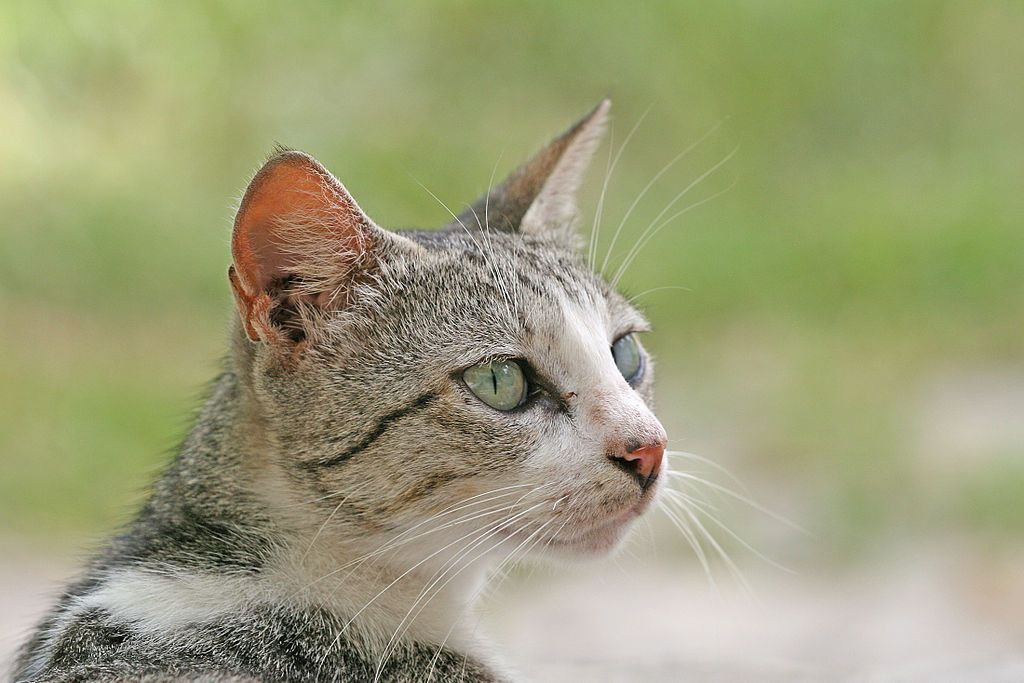

White-tailed deer see regular blaze orange as gray but if the orange has fluorescence it stands out for them. Their vision is best in the blue range so that they see well in twilight.
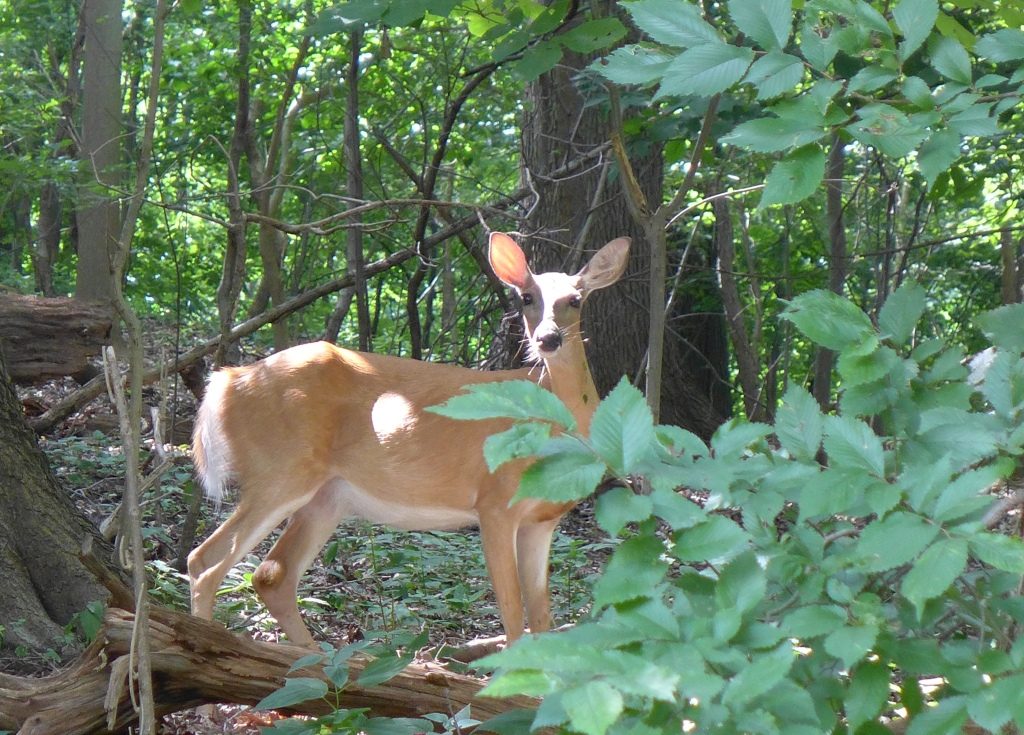
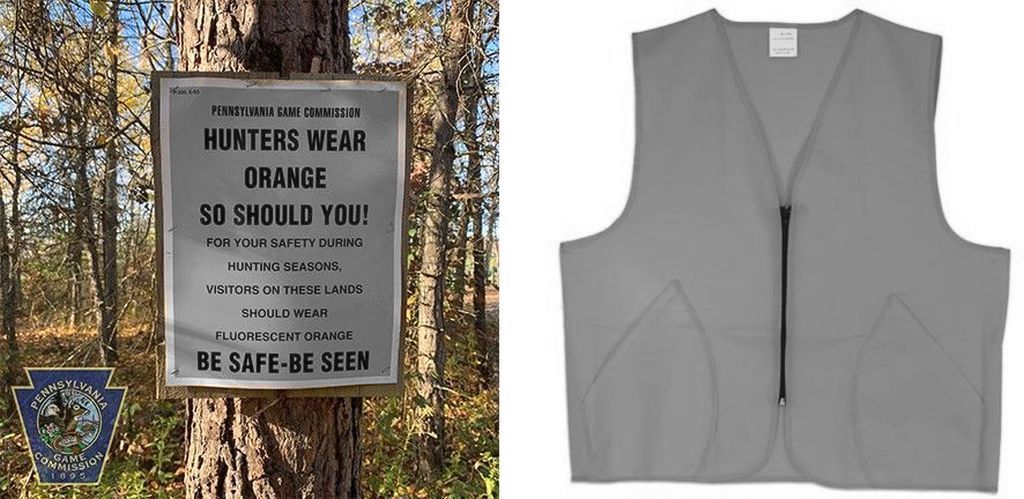
Birds see ultraviolet light though we cannot. Here’s how we know this and a hint at what birds look like in ultraviolet light.
Do other species see what we see?
No. Birds see more.
(peregrine photos by Chad+Chris Saladin, deer photo by Kate St. John, remaining photos from Wikimedia Commons)
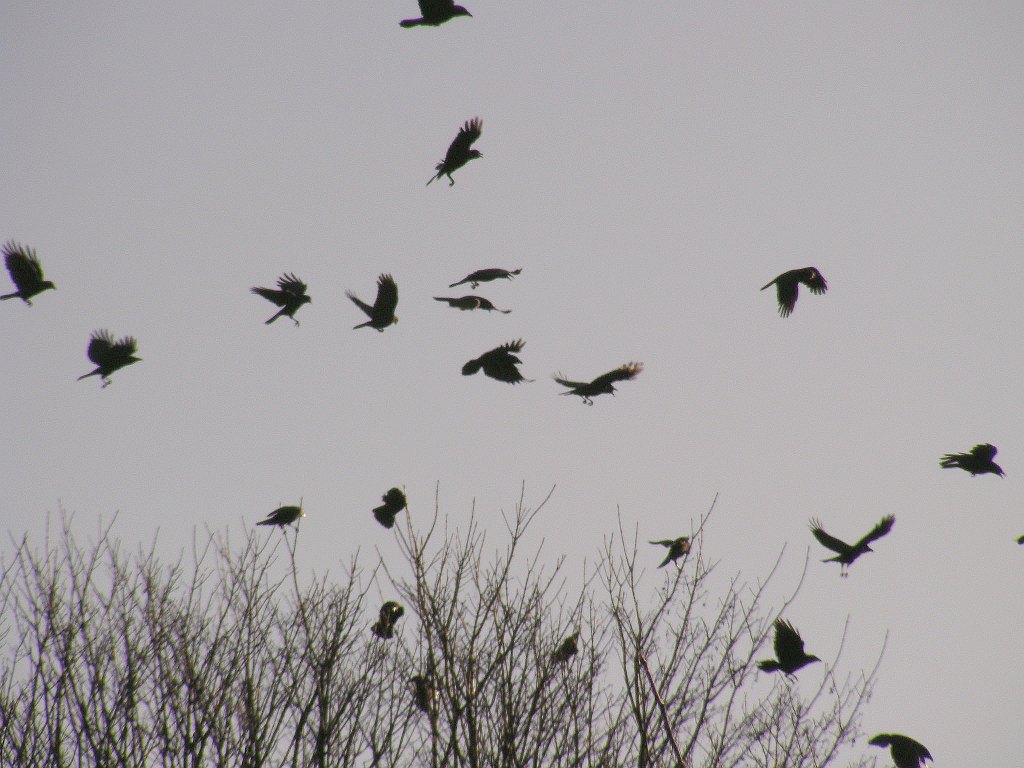
24 November 2021
People form crowds, cattle are in herds, dogs in a pack, whales in a pod and birds in flocks. But we have special group names for some species. For instance, a flock of crows is a murder, a flock of starlings is a murmuration.
Here are five unusual crowd names for birds, as listed at The Spruce.
A college of cardinals: Northern cardinals, which are red, were named for Roman Catholic cardinals whose vestments are red. The Church’s body of cardinals is called the College of Cardinals. Fall and winter are the only times when you’ll see a college of northern cardinals. They don’t flock in the breeding season.
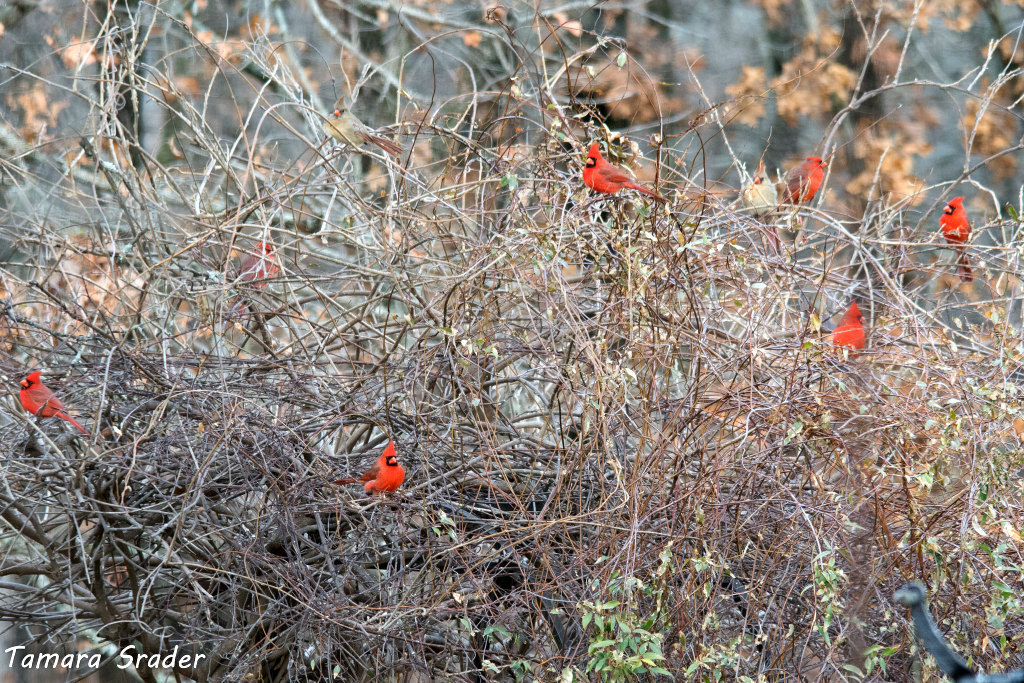
A flamboyance of flamingos: Of course.
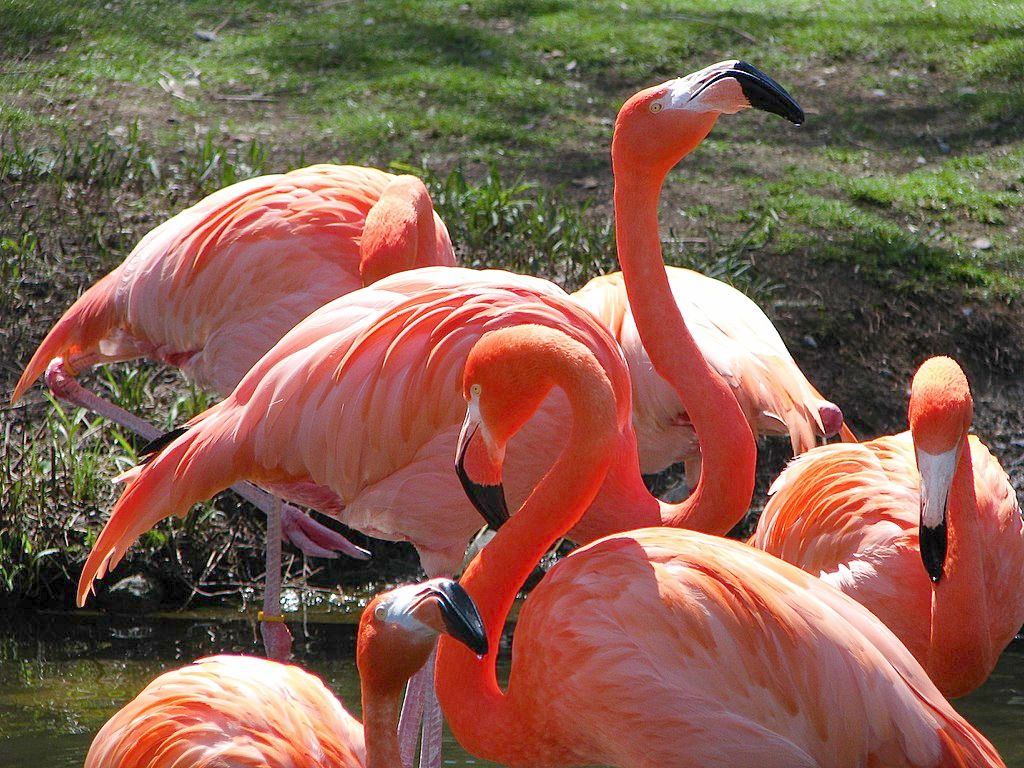
A charm of goldfinches: This group name originated in England where the native European goldfinch has a (charming) red face.

A palette of painted buntings: Flocks of painted buntings are hard to find, but even a lone male is a palette of color.

A committee of vultures: This committee is distracted as a latecomer joins them.

Vulture committees have a long and colorful history which continues to this day. I am reminded of Lewis Nordan’s 2003 book, Wolf Whistle, set in 1955 Mississippi where vultures are “buzzards,” described and quoted in this Amazon review:
Ancient buzzards named after Southern politicians take up daily residence on a telephone wire above Arrow Catcher’s main street. “The buzzards were named Vardaman and Bilbo and Hugh White and J.P. Coleman and Ross Barnett and other names of past and future governors and senators of the sovereign state of Mississippi.”
The committee pictured above is in Pennsylvania.
p.s. See more flock names at The Spruce.
(photos via Flickr and Wikimedia Creative Commons licenses. Click on the captions to see the originals)